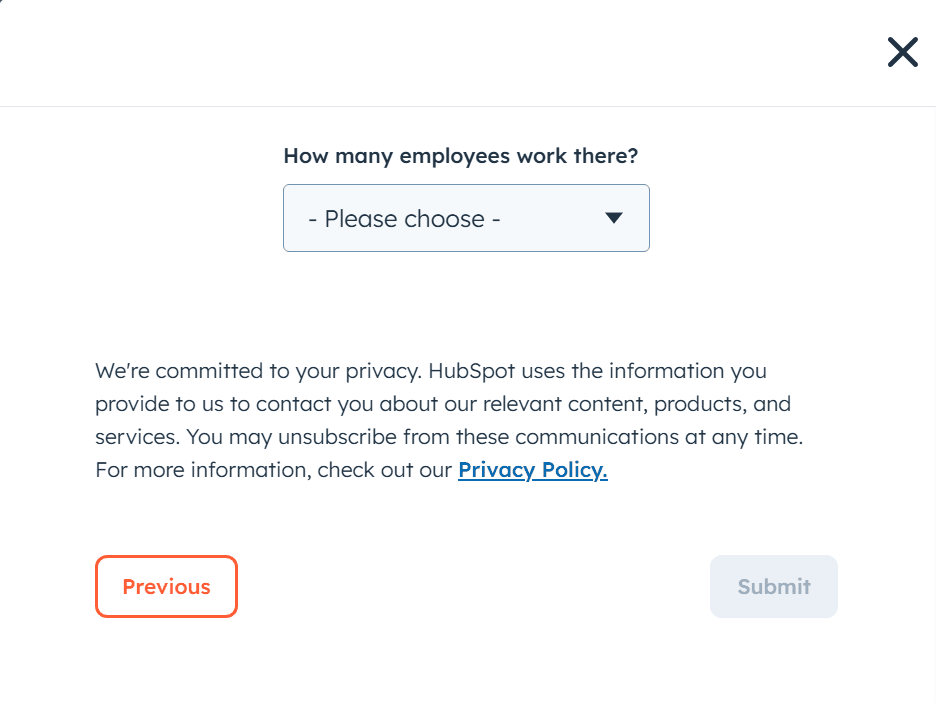Data is the lifeline of every business. The more you know about your audience, the more you can tailor your deliveries and boost your conversions.
However, data collection is more complicated than ever. Users are becoming more privacy-aware, and protection laws are tightening across regions.
If you want users to trust you with their data, your website needs a privacy policy highlighting why you need their information, what you want to do with it, and how it benefits them.
In this article, we’ll share some of the key points your website’s privacy policy must include in 2025.
What is a privacy policy?
A privacy policy is a well-defined and legally bound internal document that depicts how you manage user data. This includes how you collect, process, store, and utilize them.
Also known as a privacy clause, it highlights a form of agreement between your website and visitors, users, or customers, as the case may be. That’s why a typical policy shows what the website can do with collated data and what rights users have over how their data is used.
Of course, the primary focus of every privacy policy is on how each data piece is securely held to prevent breach, misuse, or unintended use.
Privacy policy vs. privacy notice
Privacy policy and privacy notice are often used interchangeably. However, they’re a bit different.
A privacy policy is more or less a guidebook, with dozens of checks and balances, on users’ data management. To ensure airtight data security and prevent legal infringements, each policy is as detailed as possible, containing a process of action on even minute matters. You’ll usually find them at the footer of every page on a website.
On the other hand, privacy notices are summarized, context-specific details that tell users what data is being collected from them and what it will be used for at the moment of collection. They are designed to appear at the point of entry, for instance, during newsletter signups or checkout pages, and are actionably simple to understand.
In addition, a privacy notice might feature and direct users to your website’s privacy policy. See how Hubspot did that below:

Why does your website need a privacy policy?
If your website handles user data, especially if you have site visitors from regions like the EU or California, you’re likely required by law to publish a privacy policy. Regulations like the GDPR, CCPA, VCDPA, and PIPEDA mandate clear disclosures on data use, user rights, and legal grounds for collection.
Noncompliance can lead to serious consequences, including fines up to $2,500–$7,500 per violation under the CCPA, or even user lawsuits. So, compliance saves you from legal entanglements and financial implications.
Beyond legal protection, a privacy policy offers other key benefits:
- Helps to build trust with users by showing transparency
- Strengthens your brand’s credibility and professionalism
- Guides the internal processes for data management in your team
8 points every privacy policy must hit in 2025
Your privacy policy is not generic content; so, you shouldn’t just regurgitate it from ChatGPT. Instead, it needs to reflect how your site operates—technically and commercially. Let’s see some of the things you must include below.
1. Specific Types of Data Collected
Chris Aubeeluck, Head of Sales and Marketing at Osbornes Law, says, “A generic, one-size-fits-all privacy policy often lists every imaginable data type—even those your company doesn’t actually collect. This overwhelms users and obscures what’s truly relevant. Instead, clearly list only the specific types of data you currently collect. As your data practices evolve, update the policy to reflect new categories as needed.”
You might need to particularly highlight sensitive data types listed below if you intend to collect and process any of them:
- Biometric details: Facial recognition data, fingerprint records, voice recordings, and eye tracking details.
- Financial data: Credit card, billing, subscription, and purchase history.
- Health information: Medical history, insurance data, and health tracking details.
- Communication data: Communication logs and tickets, feedback and survey responses, and voice recordings.
Since these four can significantly influence the lives of your user, the consequences of a violation are more severe—especially in the event of a breach. Regulators treat mishandling of biometric, financial, health, and communication data with heightened scrutiny, and so should you.
The data type to include also depends on your scope of offerings.
2. Real-World Purposes for Data Use
The typical privacy policy only justifies its data collection and use with ‘service improvement’. However, that’s vague and non-transparent. You need to let your users know what those improvements are.
If it’s used for AI models, clarify. Do you use behavioural data to improve ad targeting? Then write it there. Your consumer data use could be for UX personalization, segmentation, marketing, tailoring communication, or anything else. Disclose; don’t be mysterious about their usage purpose.
Also, explain how you use the data collected for these purposes, and be clear about how it benefits your users. While most users may opt out if the benefit is particularly not notable, it’s still important to be as transparent as possible to gain trust and avoid legal implications.
3. Explicit AI and Algorithmic Involvement
“Compared to a decade ago, there’s an insatiable need for more data in order to train AI models. If you had no reason to include AI use in your privacy before, now, it’s a necessity. Even if you’re not using user data for anything AI or algorithm, still state it clearly in your policy,” Sean Shapiro, Managing Partner at Axia Advisors, advises.
If you intend to utilize user data for AI purposes, disclose whether it’s to train third-party LLMs or yours, whether it’s for your website’s recommendation engines like Netflix does, or if it’s for any other automated decision-making tools.
In addition, mention the extent of involvement and the exact data types used. 57% of users feel AI poses a threat to their privacy, and such users might not want their data to be extensively used.

4. Data Retention Timelines by Category
Data retention timeline refers to how long you should keep data in your storage. Certain laws, such as the GDPR, mandate storage limitation, and violations can constitute hefty fines.
Of course, there’s rarely a universal timeline for data storage. However, best practice—and often legal expectation—is to delete or anonymize personal data once it has served its intended purpose.
For instance, a contract management software like ContractSafe may retain users’ financial or legal documents as long as they remain relevant to active agreements or regulatory requirements. Once those needs expire, the data should be purged or archived securely, and your privacy policy should reflect that lifecycle clearly.
The only exemption is if you need it for archiving purposes.
Depending on the regional laws, specific data, such as financial records, might need to be kept for a longer time due to auditing reasons. In any case, you should consider the legal basis and usage needs to determine how long user data will stay in your database.
Then let your users know these timelines. This fosters trust and reduces the risk of breach due to storage redundancy.
5. Granular Consent Options and Controls
Instead of giving users conclusive options like “reject all” or “accept all” when collecting their data, let them have access to finer permissions that they can toggle.

You can divide consent based on what you need the user data for.
- Analytics: Allow tracking and analysis of site behavior for performance improvement (e.g., Google Analytics)
- Marketing: Permit email or retargeting ads based on browsing behavior
- AI Training: Consent to using interaction data to improve your machine learning models
- Personalization: Use preferences or behavior to customize product recommendations
- Third-Party Sharing: Allow sharing of data with partners or affiliates
Jesse Hanson, Content Manager at Online Solitaire & World of Card Games, says, “In your privacy policy, you should have something like, ‘You can control how we use your data by adjusting your privacy settings. For example, you may choose to allow analytics but opt out of marketing communications. These preferences can be updated anytime by visiting your Privacy Settings Dashboard.’”
In your privacy notice or cookie pop-ups, the options should be explicitly clear and toggleable.
Besides granular consent options, your privacy policy should outline user rights to the last line. This includes access to their details, right to object to data collection or usage, right to request data deletion, portability rights, and right to self-service options in case of future objections.
6. Third-Party Processors and Their Jurisdictions
If your business has intermediaries, third-party data processors, or brand integrations, you’re most likely going to be sharing your users’ data with them for efficient functioning.
For instance, RealSTEEL Software—an ERP software for steel industry—integrates with systems like AMS Eclipse, SigmaNEST, and ProNest. These integrations may involve sharing operational and user data across platforms to streamline production and quoting processes.
Including such third-party relationships in the privacy policy is crucial for transparency and regulatory compliance.
Also, you need to explain the jurisdiction and access volume of these processors and their relationships. This includes stating how much data access they have, what they do with the data, and cross-border data transfer safeguards in place, if any.
7. Security Practices in Plain Terms
The last barrier to break if you want users to hand you their data is security concerns. Nobody wants their personally identifiable information (PII) or financial records out there. And that’s unsurprising given the number of breaches recorded year on year.
So, this section of the privacy policy focuses on how you intend to secure user data. While most security practices are technical, you don’t have to repeat the same technical grammar in your policy. Break it down into simple terms that your employees and users can understand. Talk about the encryption and access controls in place.
Also, mention audit policies, including how frequently you assess your security practices. Though not necessary, you might want to include a brief of your crisis management strategy in cases where there’s a breach.
8. Contact Path for Privacy Concerns
Most importantly, your privacy policy should include a means of communication with your website in case users have a concern and need clarification. This goes beyond adding a generic support form.
Instead, give them email access or contact information to your data protection officer. The contact path could be anything other than these, but it must be easily accessible and at little or no cost to your users.
Wrapping Up
While many see privacy policies as the not-so-important aspect of a website, you should view yours as a critical layer of trust, compliance, and credibility. And that’s why you should invest in building a comprehensive but easy-to-understand policy covering all stems of your operations with user data.
Ensure your privacy policy highlights the types of data you’re collecting, reasons for use, AI and algorithm involvement, data retention timelines, and third-party processors. Also indicate user rights, security practices for safety, granular consent options that exist, and a contact path for privacy concerns.
Lastly, review and update your privacy policy yearly—or more frequently—as your data practices, tools, or legal obligations change.





